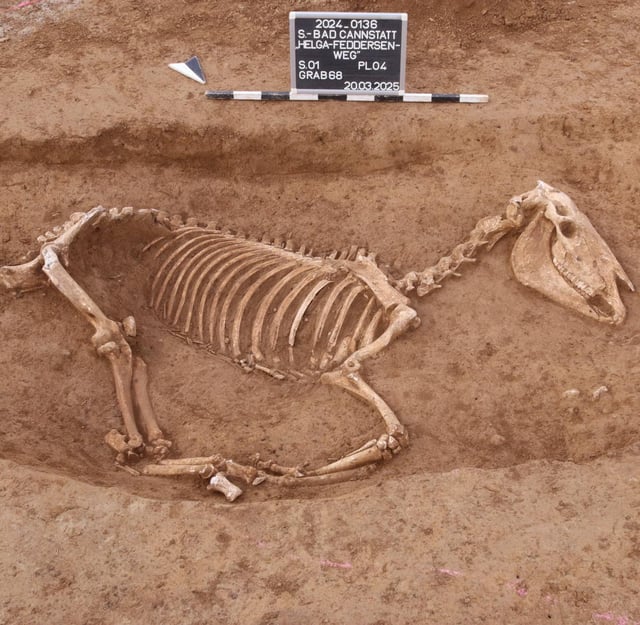Overview
- The discovery in Stuttgart's Bad Cannstatt district is the largest ancient horse burial site identified in southern Germany, dating to the 2nd century AD.
- Archaeologists have linked the site to a Roman cavalry unit, or 'ala,' stationed in the area between 100 and 150 AD, which managed an estimated 700 horses.
- The burial practices, including grave goods like pottery and oil lamps, suggest close bonds between Roman soldiers and their horses.
- The findings could reshape understanding of Roman military operations, particularly in horse provisioning, mortality, and logistical management.
- Ongoing archaeozoological analyses aim to determine the age, health, and causes of death of the horses, further illuminating their role in Roman military life.

